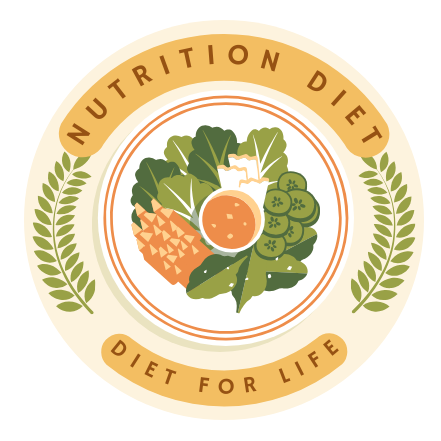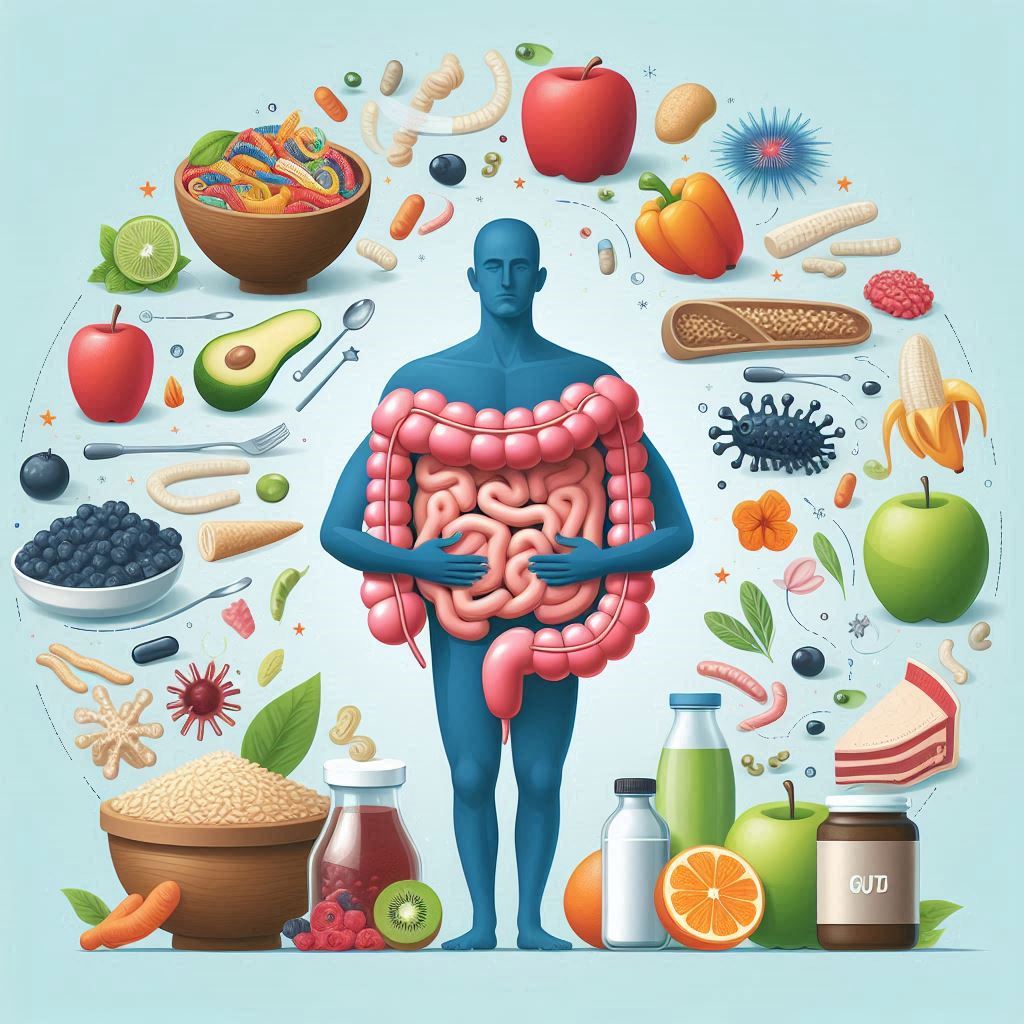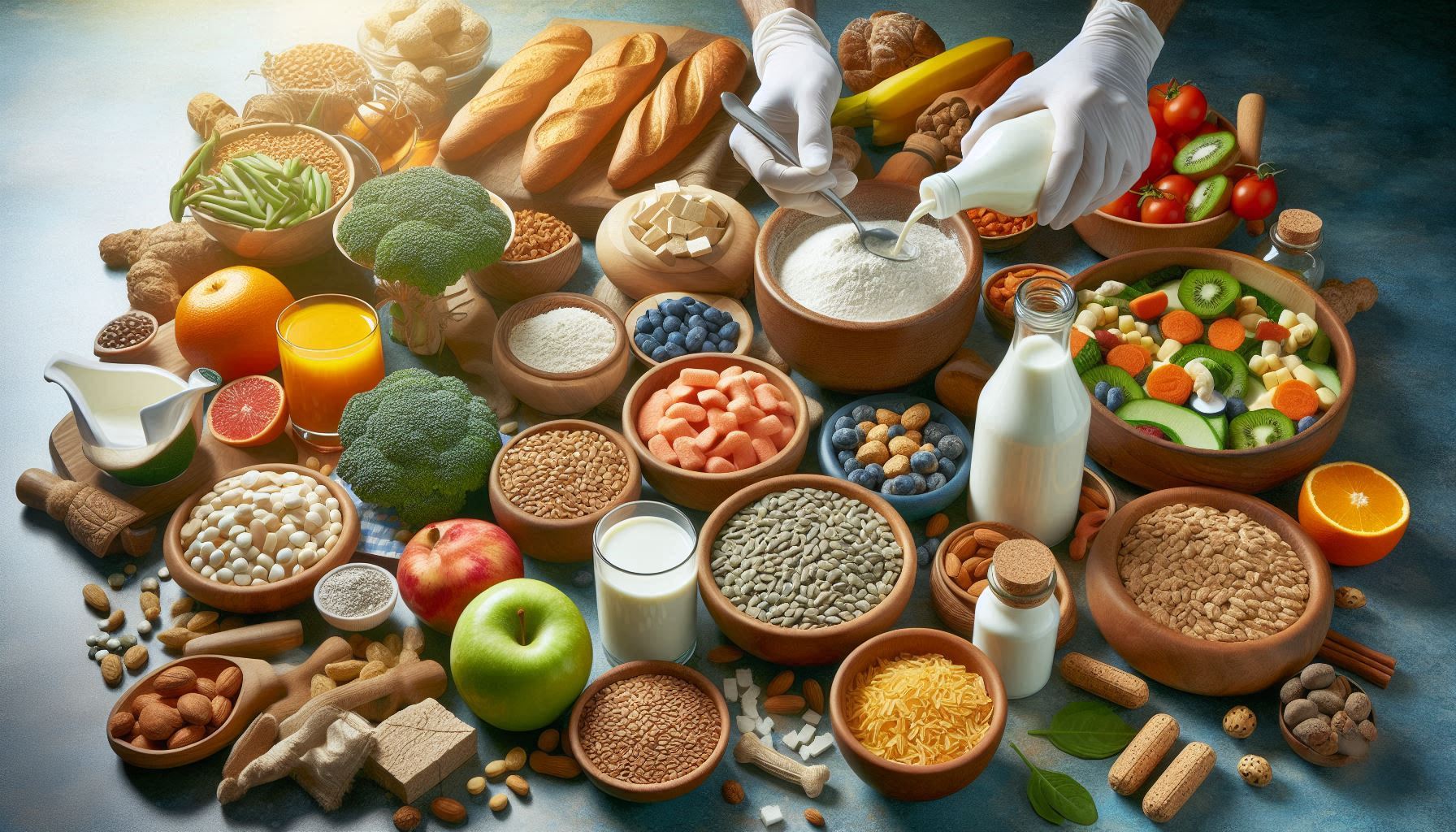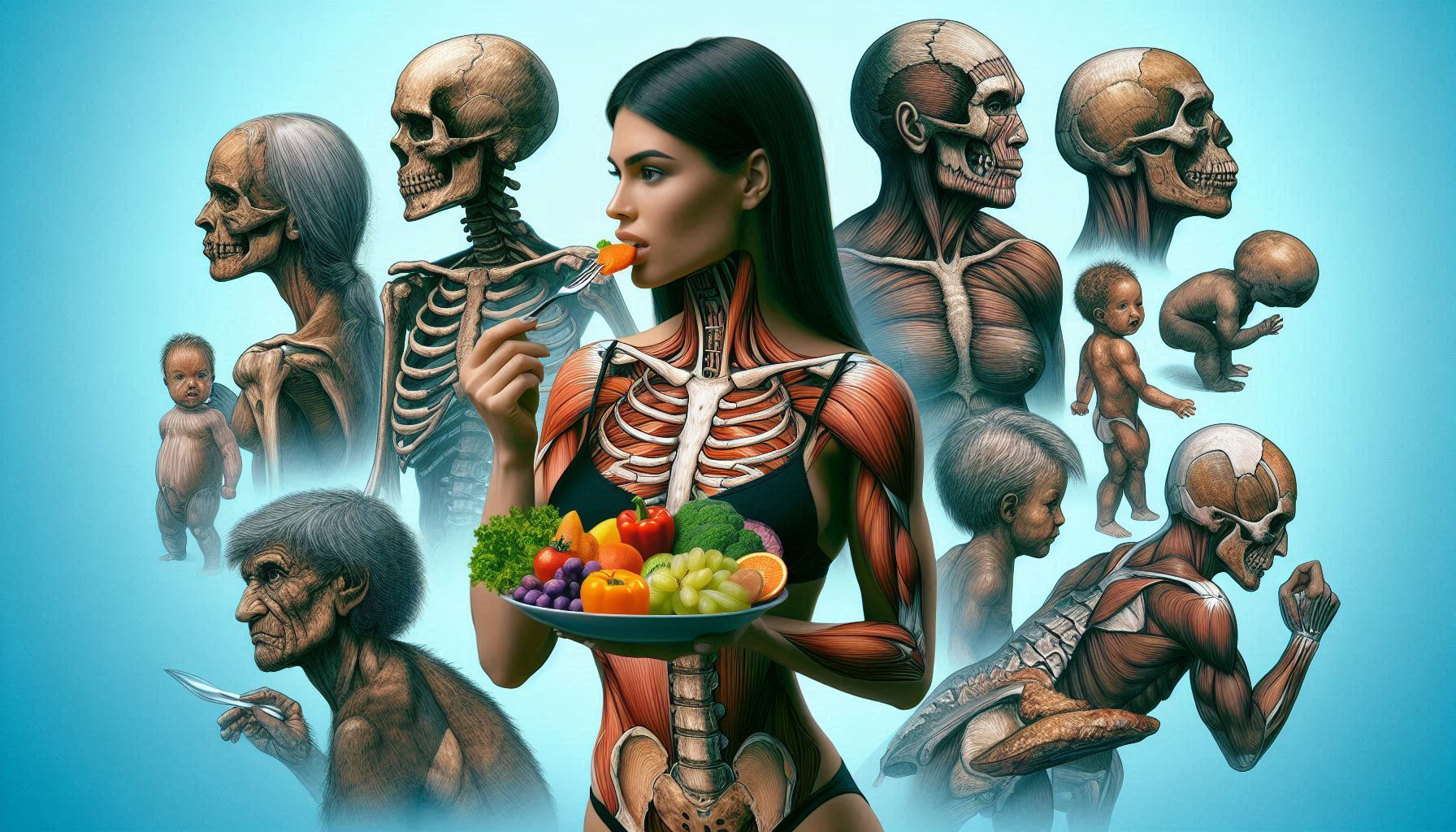The gut is often referred to as our “second brain” for good reason. It is home to a vast ecosystem of microorganism’s bacteria, viruses, fungi, and other microbes that play a crucial role in nearly every aspect of our health. Known collectively as the gut microbiome, this community of microbes influences digestion, immune function, mental health, and even metabolism. Researchers are increasingly realizing that the balance and diversity of the microbiome are key to understanding chronic diseases, weight management, and overall wellness.
What we eat is perhaps the most significant factor affecting the gut microbiome. Our diet can shape the composition and diversity of our gut bacteria, which in turn has profound effects on our health. A well-balanced microbiome promotes good digestion, a strong immune system, and a balanced metabolism. On the other hand, an imbalanced microbiome referred to as “dysbiosis” has been linked to a host of chronic conditions, including inflammatory bowel disease (IBD), diabetes, obesity, and even mental health disorders such as depression and anxiety.
This article delves into the complex relationship between gut health and nutrition. We will explore how different foods impact the gut microbiome, why a healthy gut is critical for overall health, and actionable dietary changes that can promote a thriving microbiome.
The Gut Microbiome: An Overview
The microbiome is the collective term for the trillions of microorganisms that live in and on our bodies. While the largest concentration of microbiota resides in the gut, they can also be found in other parts of the body, such as the skin, mouth, and respiratory tract. In the intestines, microbes play an indispensable role in breaking down food, synthesizing vitamins, metabolizing drugs, and protecting us from harmful pathogens.
The human gut is home to approximately 100 trillion microbial cells, which is more than 10 times the number of human cells in the body. The majority of these microbes are bacteria, but viruses, fungi, and archaea also contribute to the microbiome’s diversity.
The gut microbiome is not static; it changes over time in response to factors such as diet, age, stress, and medication use. In fact, the composition of the microbiome can vary significantly from one individual to another. However, research suggests that a diverse microbiome—one with a wide variety of microbial species is generally associated with better health outcomes.
Functions of the Microbiome
The gut microbiome is involved in many crucial functions within the body. These include:
- Digestion: Microbes break down food components that human enzymes cannot digest, such as fiber, resistant starches, and certain types of carbohydrates. This process produces short-chain fatty acids (SCFAs) such as butyrate, acetate, and propionate, which have various health benefits.
- Immune Regulation: The gut microbiome is a cornerstone of the immune system. It helps regulate the immune response and can influence the body’s ability to fight infections and respond to inflammation.
- Metabolism: Microbes play a significant role in the metabolism of nutrients and the regulation of energy balance. Some gut bacteria can extract additional calories from food that would otherwise be undigested, while others help maintain a healthy weight by regulating fat storage and hunger hormones.
- Gut Barrier Integrity: A balanced microbiome helps maintain the integrity of the intestinal lining, preventing “leaky gut” syndrome, a condition in which harmful substances can pass through the gut wall and trigger systemic inflammation.
- Mental Health: Emerging research points to a complex communication network between the gut and the brain, known as the gut-brain axis. Gut bacteria produce neurotransmitters, such as serotonin and dopamine, that can influence mood, stress levels, and mental health conditions like depression and anxiety.
The Impact of Diet on the Microbiome
The composition of the gut microbiome is heavily influenced by the foods we eat. Various dietary components can either nurture beneficial bacteria or promote the growth of harmful microorganisms. Understanding how different foods affect the microbiome can help us make dietary choices that support gut health and, by extension, overall well-being.
1. The Role of Fiber in Gut Health
Fiber is one of the most important nutrients for maintaining a healthy microbiome. Unlike other macronutrients such as proteins and fats, fiber is not digested by human enzymes but is instead fermented by gut bacteria. During fermentation, beneficial bacteria produce SCFAs, which provide energy to the cells lining the colon and help regulate inflammation.
There are two main types of fiber:
- Soluble Fiber: Found in oats, beans, lentils, fruits, and vegetables, soluble fiber dissolves in water and forms a gel-like substance in the intestines. This helps slow digestion and promotes feelings of fullness. Soluble fiber also serves as food for beneficial bacteria, supporting their growth and activity.
- Insoluble Fiber: Found in whole grains, nuts, and seeds, insoluble fiber does not dissolve in water but adds bulk to stool, helping to move waste through the digestive tract. Insoluble fiber is essential for regular bowel movements and preventing constipation.
Studies show that diets high in fiber support microbial diversity and increase the abundance of beneficial bacteria such as Bifidobacteria and Lactobacilli. On the other hand, a fiber-deficient diet has been linked to a decrease in microbial diversity and an overgrowth of pathogenic bacteria, which can contribute to gastrointestinal issues such as bloating, constipation, and even inflammatory bowel disease (IBD).
2. Fermented Foods: A Source of Probiotics
Fermented foods are rich in live microorganisms known as probiotics, which can directly impact the balance of bacteria in the gut. Probiotics are beneficial bacteria that help restore and maintain a healthy gut microbiome. They can aid digestion, modulate the immune system, and even improve mood and mental health.
Common fermented foods include:
- Yogurt: Contains live cultures of beneficial bacteria such as Lactobacillus and Bifidobacterium, which can help improve digestion and support immune function.
- Kefir: A fermented dairy product similar to yogurt, but with a wider variety of probiotic strains.
- Kimchi: A Korean fermented vegetable dish made with cabbage, radishes, and spices. It is rich in beneficial bacteria and polyphenols.
- Sauerkraut: Fermented cabbage that provides a healthy dose of probiotics and fiber.
- Kombucha: A fermented tea that contains a variety of probiotic bacteria and yeasts.
- Miso: A fermented paste made from soybeans, often used in Japanese cuisine. It is rich in probiotics and beneficial enzymes.
Research suggests that incorporating fermented foods into the diet can increase the diversity of gut bacteria and promote the growth of beneficial strains. Studies have also found that probiotics can help manage conditions like irritable bowel syndrome (IBS), diarrhea, and even reduce the side effects of antibiotic treatments, which can disrupt the microbiome.
3. Prebiotics: Nourishing Your Microbiome
Prebiotics are non-digestible food components that serve as food for beneficial gut bacteria. They are typically found in high-fiber foods and are essential for promoting the growth and activity of beneficial microorganisms. Prebiotics help balance the gut microbiome and enhance the production of SCFAs, which support gut health.
Common sources of prebiotics include:
- Garlic: Contains inulin, a type of soluble fiber that promotes the growth of beneficial bacteria.
- Onions: Rich in inulin and fructooligosaccharides (FOS), which stimulate the growth of good bacteria such as Bifidobacteria.
- Asparagus: Contains inulin and other prebiotic fibers that support the growth of beneficial bacteria.
- Bananas: Especially when unripe, bananas are high in resistant starch, a type of fiber that acts as a prebiotic.
- Chicory Root: One of the richest sources of inulin, chicory root is often used as a fiber supplement or added to processed foods for its prebiotic effects.
Consuming a variety of prebiotic-rich foods can enhance the abundance and diversity of beneficial bacteria in the gut, contributing to better digestion, improved immune function, and reduced inflammation.
4. Polyphenols: Antioxidants That Support Gut Health
Polyphenols are a diverse group of plant compounds found in a variety of fruits, vegetables, and beverages such as tea, coffee, and red wine. These compounds have potent antioxidant and anti-inflammatory properties and can help protect the gut microbiome from oxidative stress and inflammation. Interestingly, polyphenols are not fully absorbed by the body and instead pass into the gut, where they interact with gut bacteria.
Some studies suggest that polyphenols can promote the growth of beneficial bacteria while inhibiting the growth of harmful microbes. Polyphenol-rich foods such as berries, green tea, dark chocolate, and olives have been shown to increase gut microbiome diversity, which is linked to better health outcomes.
Polyphenols also have prebiotic effects, stimulating the growth of beneficial bacteria like Bifidobacteria and Lactobacillus. This makes them a valuable addition to any gut-healthy diet.
5. Fat and Protein: Balancing Macronutrients for Gut Health
Both fats and proteins have significant effects on the gut microbiome, although their impact can vary depending on the type of fat or protein consumed. A diet high in unhealthy fats, such as those found in processed foods and animal products, may promote an imbalance in the gut microbiome, leading to the overgrowth of harmful bacteria and contributing to conditions like obesity and metabolic disease.
However, healthy fats—especially omega-3 fatty acids—have been shown to support gut health by reducing inflammation and promoting the growth of beneficial bacteria. Omega-3s, found in foods such as fatty fish, walnuts, chia seeds, and flaxseeds, have anti-inflammatory effects that can help protect the gut lining and support a healthy microbiome.
Protein also plays a role in the gut microbiome. Diets rich in plant-based proteins, such as beans, lentils, and quinoa, have been shown to promote a more diverse and healthier microbiome compared to diets high in animal proteins, which can increase the abundance of harmful bacteria.
6. The Impact of Sugar and Processed Foods on Gut Health
Dietary sugar and processed foods can have a profoundly negative impact on the gut microbiome. High intakes of added sugars and refined carbohydrates can lead to an overgrowth of harmful bacteria and fungi, such as Candida, while suppressing the growth of beneficial microbes. A diet high in sugar has also been associated with reduced microbial diversity, which is linked to a higher risk of obesity, diabetes, and cardiovascular disease.
Processed foods—rich in unhealthy fats, sugars, and artificial additives—can also disrupt the balance of the gut microbiome, leading to dysbiosis. In fact, studies have found that diets high in processed foods can significantly reduce microbial diversity and promote inflammation, both of which contribute to chronic disease.
Practical Tips for Promoting Gut Health Through Diet
Now that we understand the profound impact diet has on the microbiome, let’s explore some practical steps you can take to support your gut health:
- Eat a Variety of Plant-Based Foods: A diverse diet rich in fruits, vegetables, whole grains, legumes, and nuts is key to promoting gut health. Aim to consume a range of colorful foods to ensure you get a variety of nutrients, fibers, and polyphenols.
- Incorporate Fermented Foods: Adding probiotic-rich foods like yogurt, kefir, kimchi, sauerkraut, and kombucha to your diet can help restore and maintain a healthy balance of gut bacteria.
- Focus on Fiber: Ensure you’re getting enough fiber, especially from whole grains, legumes, fruits, and vegetables. Aim for at least 25-30 grams of fiber per day to support gut health and digestive function.
- Limit Processed Foods and Sugars: Minimize the consumption of sugary snacks, sugary drinks, and processed foods. These can promote the growth of harmful bacteria and lead to gut dysbiosis.
- Stay Hydrated: Drinking plenty of water helps to keep the digestive system functioning properly and supports the overall health of your gut.
- Consider Prebiotics: Include foods like garlic, onions, asparagus, and bananas in your diet to feed the beneficial bacteria in your gut.
- Consume Omega-3 Fatty Acids: Prioritize omega-3-rich foods like fatty fish, walnuts, and flaxseeds, which support gut health and reduce inflammation.
Conclusion
The gut microbiome is vital to our overall health, influencing digestion, immunity, metabolism, and even mental well-being. The foods we eat directly shape the diversity and function of the microbes in our gut, making diet a key factor in maintaining a healthy microbiome. A diet rich in fiber, fermented foods, prebiotics, polyphenols, and healthy fats fosters a balanced gut environment, supporting the growth of beneficial bacteria and reducing inflammation. Fiber-rich foods, such as fruits, vegetables, and whole grains, serve as fuel for beneficial gut bacteria, promoting digestive health and reducing the risk of chronic diseases. Fermented foods like yogurt, kimchi, and kombucha introduce probiotics, which help balance the microbiome and enhance gut health. Prebiotics found in foods like garlic, onions, and bananas feed beneficial bacteria, further supporting a thriving gut ecosystem. Incorporating polyphenol-rich foods like berries, tea, and dark chocolate can boost microbial diversity, while healthy fats, especially omega-3s from fish, nuts, and seeds, help reduce inflammation and protect the gut lining. By focusing on a varied, plant-based diet, we can optimize the health of our gut microbiome, improve overall health, and prevent chronic diseases such as obesity, diabetes, and inflammatory disorders.
SOURCES
Gibson, G. R., 2017. Dietary modulation of the human gut microbiota. Food Research International, 99, 201-210.
Koh, A., 2016. Microbiome and the gut-brain axis: Implications for autism spectrum disorder. Neuroscience & Biobehavioral Reviews, 63, 59-72.
Sonnenburg, J. L., 2016. The human gut microbiome: Diversity and dynamics. Nature, 536(7615), 48-56.
Zhao, L., 2018. Gut microbiota and the development of metabolic disease. Frontiers in Microbiology, 9, 1-9.
David, L. A., 2014. Diet rapidly and reproducibly alters the human gut microbiome. Nature, 505(7484), 559-563.
Cani, P. D., 2013. Metabolic endotoxemia, gut microbiota, and the pathogenesis of type 2 diabetes. Diabetes Care, 36(12), 1641-1642.
Lerner, A., 2016. The microbiome in autoimmune disease. Autoimmunity Reviews, 15(3), 298-309.
Turnbaugh, P. J., 2009. A core gut microbiome in obese and lean twins. Nature, 457(7228), 480-484.
HISTORY
Current Version
November 11, 2024
Written By:
SUMMIYAH MAHMOOD




